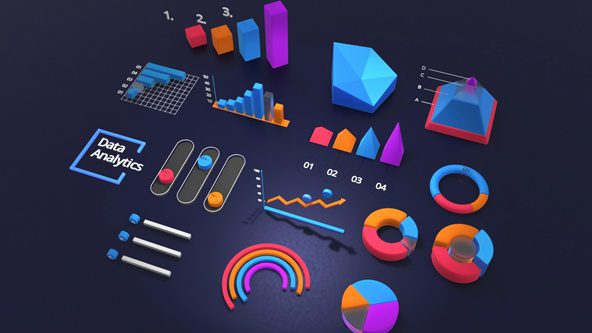Analytics and EBHR
HR and Big Data Rule 2 – Start small
Nick Holley, CRF Director of Learning
Rule 2: Don’t over-invest in your data initiative; start small and prove the concept.
The use of the phrase Big Data in last week’s blog post triggered a lot of comment, both good and bad. I use it deliberately to provoke.
When I undertook my research I started with Big Data as it sounded exciting and relevant; entering HR and Big Data in Google generates 24 million hits. As I carried out my interviews (many of which I’ve shared below) I began to question my focus on big and realised small is a good place to start.
With Rule 1 we discussed that the starting point for HR analytics initiatives tends to be either the issue or the data. The danger when starting with the data is that it can divert you; you get so fascinated by the potential of Big Data that you can’t see the wood for the trees. The key skill is the ability to stand back and take a strategic view around which business issues to address as opposed to starting with HR issues. One interviewee warned: “focus on organisational priorities, don’t do irrelevant anlaysis”. While another told me: “HR collects lots and lots of data, but we miss the ‘so what’: so what will we do differently as a result?”

On Demand Courses
Enrol onto our On Demand courses, including our flagship Effective HR Business Partnering, and others in our HRBP Suite.
In some cases, people have stumbled on the concept of Big Data when faced with these specific issues. In other cases, there has been a conscious decision to start small, exploring a couple of areas to demonstrate the power of data analytics to make better decisions using evidence and insights, before expanding the initiative. As one interviewee shared: “We need to shift the questions from: How many managers do I have? How many open job postings? How many people left last year? How much did I pay in bonuses this year? What is my headcount? To: Do my best people intend to stay? How effective are my leaders? How am I performing compared with my competitors? What people measures drive profitability? How much should I invest in people development?”
It is easy for the business or HR luddites to point the finger saying I don’t believe it, or I won’t make a decision because the data is wrong. This has driven a second data centric approach that has involved investing a lot of time and money in creating one ‘golden data source’:
- Extracting, validating, mapping, aggregating and cleansing existing data
- Standardising definitions, grades, functions, structures and hierarchies into one data dictionary, not only within HR but also across functions, especially with finance
- Agreeing standards for data security and privacy, data management and governance
The problem is that in most of the cases I saw this takes a huge amount of time (we heard from six months to three years to set up a master suite of data to cover everything) and a massive investment of resources. This is a potential problem for all organisations but especially for smaller ones. The problem is multiplied not only by the complexity and volume of the data but also the fact that organisations are changing so quickly.
It leads me to conclude it is dangerous to spend millions on a perfect implementation as it either never is, or by the time it arrives the world has moved on. “Don’t try and build the perfect data store; you’ll never ever get there,” agreed on interviewee. Another warned: “I’ve tried to implement a data warehouse five times and failed.”
Never forget perfect is the enemy of done.
Whilst it is important to have a single source of truth, it is perhaps more important to agree which data really matters and focus there rather than trying to boil the ocean. This needs to be driven by what you’ll do with the data: what questions you need answers to, not the other way round. The danger is that it’s all produced but nothing is done with it.
‘Don’t start doing analytics without strategic business direction as these efforts are likely to stall. Not only does it waste resources, it risks creating widespread skepticism about the real value of analytics… Traditionally, organizations are tempted to start by gathering all available data before beginning their analysis. Too often, this leads to an all-encompassing focus on data management – collecting, cleansing and converting data – with little time, energy or resources to understand their potential uses.’
Big Data, Analytics and the Path From Insights to Value. MIT Sloane Management Review.
The effort to create the ‘golden source’ may result in getting the data 100% right but if you aren’t using the data correctly it can produce irrelevant insights. “Many people think more is more when actually less is better,” said one interviewee. By focusing on the 10% and freeing up the time to get there quicker might be a better approach.
Perhaps the lesson is that talking about Big Data is a double-edged sword where a big investment creates big expectations, when actually this is simply about making better decisions using evidence and insight. Simply starting with what you have and making better use of it is enough to prove the concept. Perhaps a low-key stealth option could be a good start?
CRF Learning’s upcoming On Demand module Workforce Analytics and Storytelling will launch in July. Contact clive@crforum.co.ukto register your interest and find out more.





